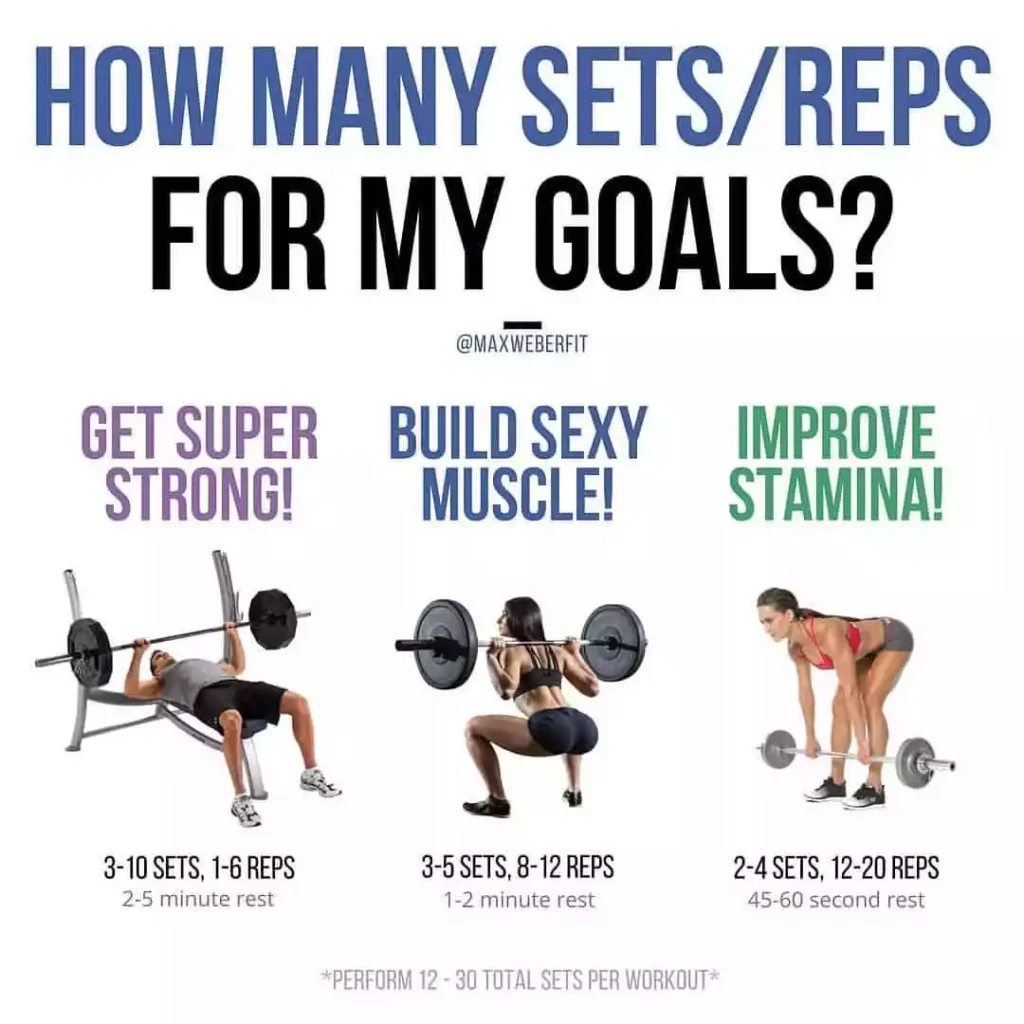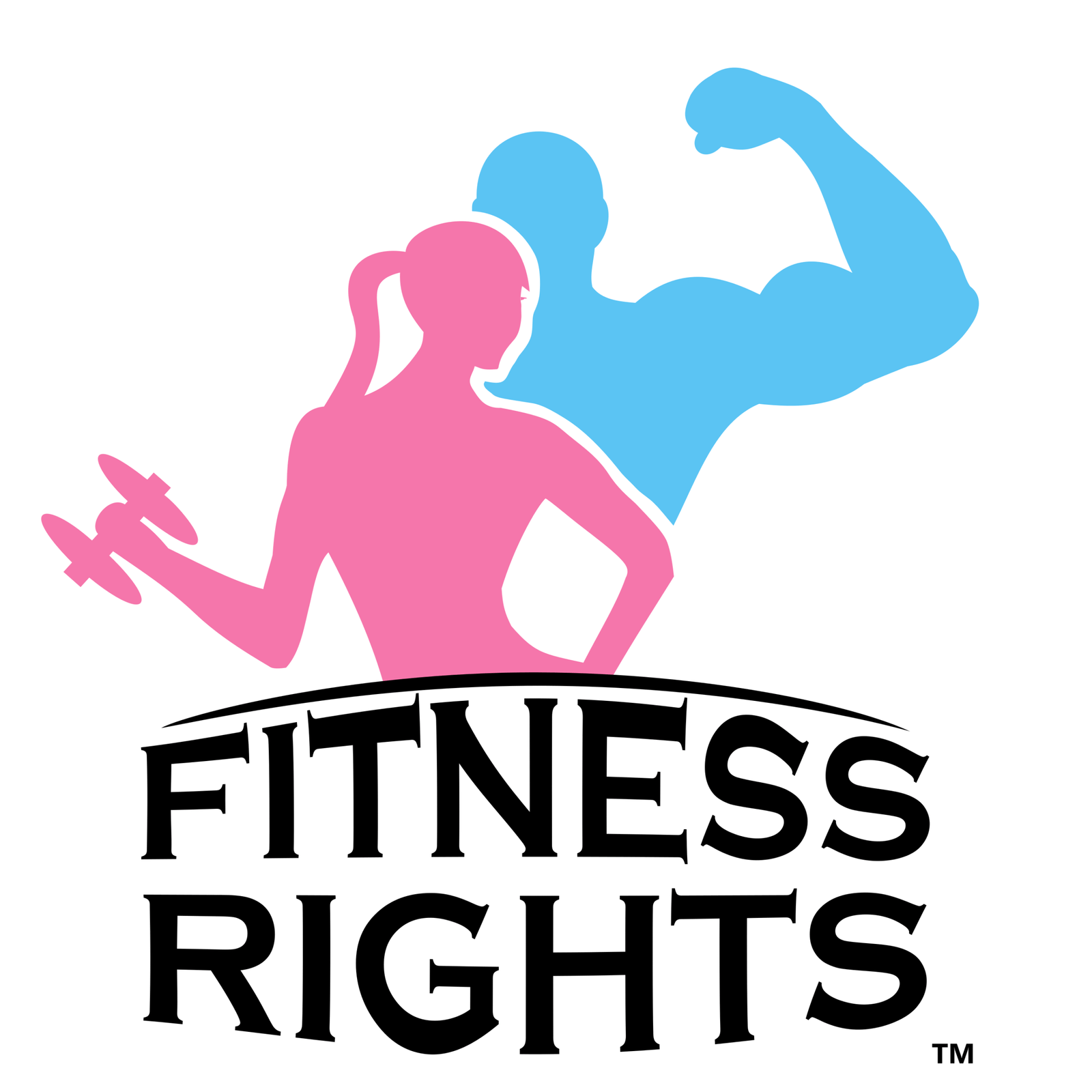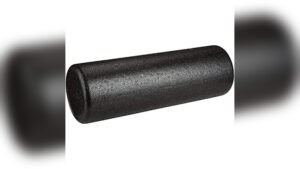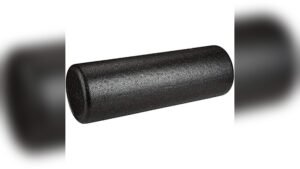Weight loss is a journey that requires a blend of dedication, knowledge, and the right approach. One of the most effective ways to shed those extra pounds is through a well-structured workout plan that incorporates the right number of reps and sets. This article delves into the intricacies of reps and sets, providing a comprehensive guide to help you achieve your weight loss goals.
Table of Contents
ToggleUnderstanding the Basics of Reps and Sets
Reps, short for repetitions, refer to the number of times you perform a specific exercise. Sets, on the other hand, are groups of repetitions. For instance, if you do 10 push-ups, rest, and then do another 10, you have completed two sets of 10 reps each.
Why Reps and Sets Matter
The combination of reps and sets plays a crucial role in determining the effectiveness of your workout. Different rep and set schemes can target various fitness goals, such as building muscle, increasing endurance, or losing weight. For weight loss, the focus is often on higher reps with moderate weights to increase calorie burn and improve cardiovascular health.
Historical Perspective
The concept of reps and sets dates back to the early 20th century when strength training began to gain popularity. Pioneers like Eugen Sandow and Arthur Saxon emphasized the importance of structured workouts, laying the foundation for modern fitness routines.
The Role of Reps and Sets in Weight Loss
High Reps vs. Low Reps
When it comes to weight loss, the debate between high reps and low reps is ongoing. High reps (15-20) with lighter weights are often recommended for burning calories and improving muscle endurance. This approach keeps your heart rate elevated, leading to increased calorie expenditure.
Low Reps for Strength
While high reps are beneficial for weight loss, incorporating low reps (6-8) with heavier weights can also be advantageous. This method helps build muscle mass, which in turn boosts your metabolism. A higher metabolic rate means your body burns more calories even at rest.
Combining Both Approaches
A balanced workout plan that includes both high and low reps can provide the best of both worlds. For instance, you can dedicate certain days to high-rep workouts and others to low-rep strength training. This combination ensures you are burning calories while also building muscle.
Designing Your Workout Plan

Creating an effective workout plan involves more than just deciding on the number of reps and sets. It requires a holistic approach that includes various types of exercises, proper nutrition, and adequate recovery.
Choosing the Right Exercises
For weight loss, compound exercises that work multiple muscle groups are highly effective. These include:
• Squats
• Deadlifts
• Bench Press
• Pull-Ups
• Rows
These exercises not only burn more calories but also improve overall strength and endurance.
Structuring Your Workout
A typical workout plan for weight loss might look like this:
• Warm-Up: 5-10 minutes of light cardio (e.g., jogging, jumping jacks)
• Strength Training: 3-4 sets of 8-12 reps for each exercise
• Cardio: 20-30 minutes of high-intensity interval training (HIIT)
• Cool Down: 5-10 minutes of stretching
Choosing the Right Number of Reps and Sets
High Reps vs. Low Reps for Weight Loss
As mentioned earlier, high reps with lighter weights are generally recommended for weight loss. This approach keeps your heart rate elevated, leading to increased calorie burn. However, incorporating low reps with heavier weights can also be beneficial for building muscle and boosting metabolism.
Sample Workout Plan
Here’s a sample workout plan that combines both high and low reps:
• Monday: High Reps
– Squats: 3 sets of 15-20 reps
– Push-Ups: 3 sets of 15-20 reps
– Bent-Over Rows: 3 sets of 15-20 reps
• Wednesday: Low Reps
– Deadlifts: 4 sets of 6-8 reps
– Bench Press: 4 sets of 6-8 reps
– Pull-Ups: 4 sets of 6-8 reps
• Friday: Combination
– Lunges: 3 sets of 10-12 reps
– Overhead Press: 3 sets of 10-12 reps
– Plank: 3 sets of 30-60 seconds
Combining Cardio and Strength Training
Benefits of Cardio for Weight Loss
Cardio exercises are essential for burning calories and improving cardiovascular health. Activities like running, cycling, and swimming can significantly contribute to weight loss. High-intensity interval training (HIIT) is particularly effective, as it alternates between short bursts of intense activity and periods of rest, maximizing calorie burn.
Integrating Strength Training for Optimal Results
Strength training is equally important for weight loss. Building muscle increases your resting metabolic rate, meaning you burn more calories even when not exercising. Incorporating both cardio and strength training into your routine ensures a balanced approach to weight loss.
Sample Cardio and Strength Training Routine
• Monday: Cardio
– 30 minutes of running or cycling
– 10 minutes of HIIT (e.g., sprints, burpees)
• Wednesday: Strength Training
– Squats: 3 sets of 12 reps
– Deadlifts: 3 sets of 12 reps
– Bench Press: 3 sets of 12 reps
• Friday: Combination
– 20 minutes of moderate cardio (e.g., brisk walking)
– 20 minutes of strength training (e.g., lunges, push-ups)
Nutrition and Recovery
Importance of a Balanced Diet
A balanced diet is crucial for weight loss. Consuming the right mix of macronutrients (proteins, carbohydrates, and fats) and micronutrients (vitamins and minerals) ensures your body has the fuel it needs to perform and recover from workouts. Focus on whole foods like lean meats, vegetables, fruits, and whole grains.
Role of Recovery in Weight Loss
Recovery is often overlooked but is essential for weight loss. Adequate rest allows your muscles to repair and grow, which in turn boosts your metabolism. Aim for 7-9 hours of sleep per night and consider incorporating rest days into your workout plan.
Tips for Effective Recovery
• Stay Hydrated: Drink plenty of water throughout the day.
• Stretch: Incorporate stretching or yoga to improve flexibility and reduce muscle soreness.
• Listen to Your Body: If you feel overly fatigued, take a rest day to prevent injury.
Tracking Progress and Adjusting Your Plan
Monitoring Your Workouts
Keeping track of your workouts is essential for measuring progress and making necessary adjustments. Use a journal or a fitness app to log your exercises, reps, sets, and weights. This data can help you identify patterns and areas for improvement.
Making Necessary Adjustments
As you progress, you may need to adjust your workout plan to continue seeing results. This could involve increasing the weight, changing the number of reps and sets, or incorporating new exercises. Regularly reviewing your progress ensures you stay on track to achieve your weight loss goals.
Sample Progress Tracking Template
| Date | Exercise | Reps | Sets | Weight | Notes |
|————|—————-|——|——|——–|———————-|
| 01/01/2023 | Squats | 12 | 3 | 50 lbs | Felt strong |
| 01/03/2023 | Bench Press | 10 | 3 | 40 lbs | Slight shoulder pain |
| 01/05/2023 | Deadlifts | 8 | 4 | 60 lbs | Increased weight |
Relevant Data Table For How Many Reps and Sets for Weight Loss?
| Exercise Type | Reps Range | Sets Range | Rest Between Sets | Frequency (per week) |
| Strength Training | 8-12 | 3-4 | 60-90 seconds | 3-4 times |
| High-Intensity Cardio | 15-20 | 2-3 | 30-60 seconds | 2-3 times |
| Low-Intensity Cardio | 20-30 | 1-2 | 0-30 seconds | 3-5 times |
| Circuit Training | 10-15 | 3-4 | 30-60 seconds | 2-3 times |
FAQs
1. How many reps and sets should I do to lose weight?
The number of reps and sets you should do to lose weight depends on your fitness level and goals. Generally, a combination of high reps (15-20) with moderate weights and low reps (6-8) with heavier weights is effective. High reps help burn calories and improve muscle endurance, while low reps build muscle mass, boosting your metabolism.
For beginners, starting with 3 sets of 12-15 reps for each exercise is a good approach. As you progress, you can increase the weight and adjust the number of reps and sets accordingly. It’s essential to listen to your body and avoid overtraining, as this can lead to injury and hinder your progress.
2. Is it better to do more reps with lighter weights or fewer reps with heavier weights for weight loss?
Both approaches have their benefits, and incorporating a mix of high reps with lighter weights and low reps with heavier weights can be the most effective strategy for weight loss. High reps with lighter weights keep your heart rate elevated, leading to increased calorie burn. This approach also improves muscle endurance and cardiovascular health.
On the other hand, low reps with heavier weights help build muscle mass, which boosts your resting metabolic rate. A higher metabolic rate means your body burns more calories even when you’re not exercising. Combining both methods ensures you are burning calories while also building muscle, leading to more effective weight loss.
3. How often should I change my workout routine?
Changing your workout routine every 4-6 weeks is generally recommended to prevent plateaus and keep your body challenged. When you perform the same exercises repeatedly, your body adapts, and the effectiveness of your workouts may decrease. Introducing new exercises, adjusting the number of reps and sets, or increasing the weight can help keep your workouts effective.
It’s also essential to listen to your body and make adjustments based on your progress and any signs of overtraining or injury. Regularly reviewing your workout plan and making necessary changes ensures you continue to see results and stay motivated.
4. Can I lose weight with just strength training?
Yes, you can lose weight with just strength training, but incorporating cardio exercises can enhance your results. Strength training builds muscle mass, which increases your resting metabolic rate, leading to more calories burned throughout the day. However, cardio exercises, such as running, cycling, or swimming, are highly effective for burning calories and improving cardiovascular health.
A balanced workout plan that includes both strength training and cardio exercises is the most effective approach for weight loss. This combination ensures you are burning calories, building muscle, and improving overall fitness.
5. How important is diet in a weight loss program?
Diet plays a crucial role in a weight loss program. No matter how effective your workout plan is, you won’t see significant results without proper nutrition. Consuming a balanced diet that includes the right mix of macronutrients (proteins, carbohydrates, and fats) and micronutrients (vitamins and minerals) is essential for fueling your workouts and supporting recovery.
Focus on whole foods like lean meats, vegetables, fruits, and whole grains. Avoid processed foods, sugary drinks, and excessive amounts of unhealthy fats. Staying hydrated and eating smaller, frequent meals can also help regulate your metabolism and prevent overeating.
Conclusion
Achieving weight loss through a well-structured workout plan involves understanding the right balance of reps and sets, integrating both cardio and strength training, maintaining a balanced diet, and allowing for proper recovery. Regularly tracking progress and making necessary adjustments will help in reaching your weight loss goals effectively. For more insights, you can explore discussions on Reddit and expert advice on PopSugar.
Posts References:
What should my rep range be to lose weight? : r/loseit
How Many Reps and Sets to Do to Lose Fat – Fitness







